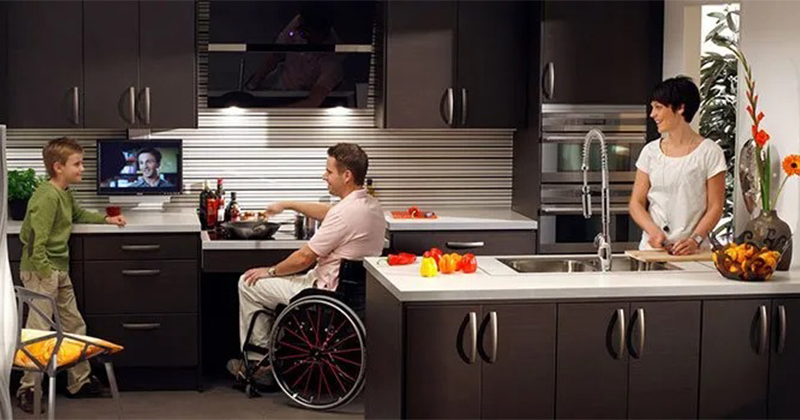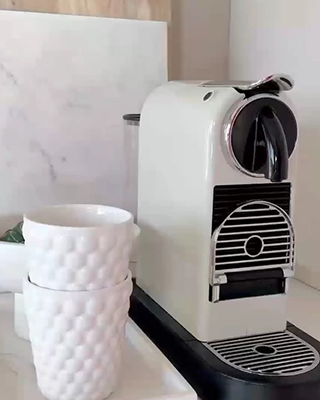
Show steps to make a kitchen accessible for elderly or disabled cooks
The kitchen is often referred to as the heart of the home, but for the elderly or disabled it can be a source of frustration and even danger. The good news is that with a few simple changes, the kitchen can be made more accessible, allowing these individuals to cook and enjoy their favorite dishes in a safe and comfortable environment. In this article, we discuss the steps to make a kitchen accessible for elderly or disabled cooks.
Step 1: Evaluate the kitchen space
The first step in making a kitchen accessible is to assess the space. Be aware of any obstacles or hazards that could pose a hazard to the person, such as low-hanging cabinets, crowded countertops, or appliances that are difficult to access. Look for areas where changes can be made to improve accessibility and safety.

Step 2: Install grab bars and handrails
One of the most important changes that can be made to a kitchen is the installation of grab bars and handrails. These simple additions can help people with limited mobility move around the kitchen more safely and easily. Handrails can be placed on walls and cabinets, while grab bars can be placed near the stove, sink, and other high-traffic areas.
Step 3: Lower countertops and cabinets
Another modification that can significantly improve accessibility in the kitchen is lowering countertops and cabinets. For people who use a wheelchair or have difficulty standing for long periods of time, countertops and cabinets that are too high can be a significant obstacle. Lowering these surfaces can make meal preparation and access to dishes and other kitchen utensils easier.
Step 4: Install pull out shelves and drawers
Pull out shelves and drawers are another modification that can make a big difference in kitchen accessibility. These types of storage solutions easily fit into existing closets and make it easier to access the items stored in the back of the closet. For those with mobility impairments, this can be critical as they no longer have to reach or reach to reach objects.
Step 5: Install lever fittings and doorknobs
Traditional round doorknobs and faucets can be difficult to use for those with arthritis or other hand disabilities. Lever style faucets and doorknobs are a great alternative as they require less dexterity and force to operate. These modifications are relatively easy to install and can greatly improve accessibility in the kitchen.
Step 6: Lay non-slip flooring
Slippery floors can be a significant hazard in the kitchen, especially for those with mobility issues. Installing non-slip flooring can help reduce the risk of falls and improve overall safety in the kitchen. There are many different types of non-slip flooring including vinyl, rubber, and cork.
Step 7: Improve Lighting
Good lighting in the kitchen is essential, especially for people with visual impairments. Installing brighter light bulbs or adding additional lighting fixtures can help improve visibility and reduce the risk of accidents. It’s also a good idea to install task lighting, such as under-cabinet lighting, to improve visibility while cooking and preparing meals.

Step 8: Consider assistive technologies
There are many different types of assistive technology that can be used to make the kitchen more accessible. For example, voice-activated assistants can be used to control appliances and lights, while smart ovens can be controlled remotely. Other assistive technology options include automatic jar openers, handy utensils and cutting boards with integrated clamps.
Step 9: Consider devices
When choosing appliances for an accessible kitchen, there are a few important features to consider. First and foremost, devices should be easy to use and have large, easy-to-read buttons and displays. Devices with built-in timers and programmable settings can also be helpful for those with memory or cognitive impairments. Other helpful features can include side-opening ovens, bottom-freezer fridges and hobs with controls on the front of the unit.
Step 10: Organize the kitchen
Keeping the kitchen tidy is crucial to make it more accessible to the elderly or disabled. This can be accomplished by reducing clutter and keeping commonly used items within easy reach. Consider using drawer organizers, pull-out shelves, and other storage solutions to keep the kitchen tidy and functional. Labeling cupboards and drawers can also help people with memory or cognitive impairments find what they need more easily.
Step 11: Adjust the sink
The sink is an area of the kitchen that can pose a particular challenge for people with limited mobility. To facilitate access to the sink, you should think about installing a flat sink with a single-lever mixer. A pull-out spray can also be helpful for people who have difficulty reaching the sink. Also, consider installing a sink with knee room to make it easier for wheelchair users to use.
Step 12: Make Room for Wheelchairs
Finally, when a person using a wheelchair uses the kitchen, it is important to ensure that there is enough space for them to move around comfortably. This may require adjusting the layout of the kitchen or removing obstacles such as kitchen islands or low-hanging cabinets. Ensure there is enough space to maneuver the wheelchair and consider adding a raised worktop or cutting board to make it easier to work at the correct height.
Step 13: Consider universal design principles
Universal design principles aim to create spaces that are accessible and functional for people of all ages and abilities. When making changes to a kitchen, it’s important to keep these principles in mind and make changes that benefit everyone, not just those with disabilities. For example, the inclusion of pull-out shelves and drawers can benefit both wheelchair users and those with limited physical disabilities who simply want to reach items more easily.
By following these steps, you can make a kitchen more accessible for elderly or disabled cooks. Whether it’s installing grab bars and handrails, lowering countertops and cabinets, or adding assistive technology, there are many different modifications that can be made to improve accessibility and safety in the kitchen. With a little planning and creativity, the kitchen can once again become the centerpiece of the home for people of all ages and abilities.

Hey there! I'm Emma!
Home On The Grove, A Phoenix-based blog, serves as an inspiration hub for feminine, casual style, as well as covering home & decor, home & garden, home essentials, fashion, beauty, and lifestyle topics.
Social
trending now
COPYRIGHT © 2023 HOME ON THE GROVE.







